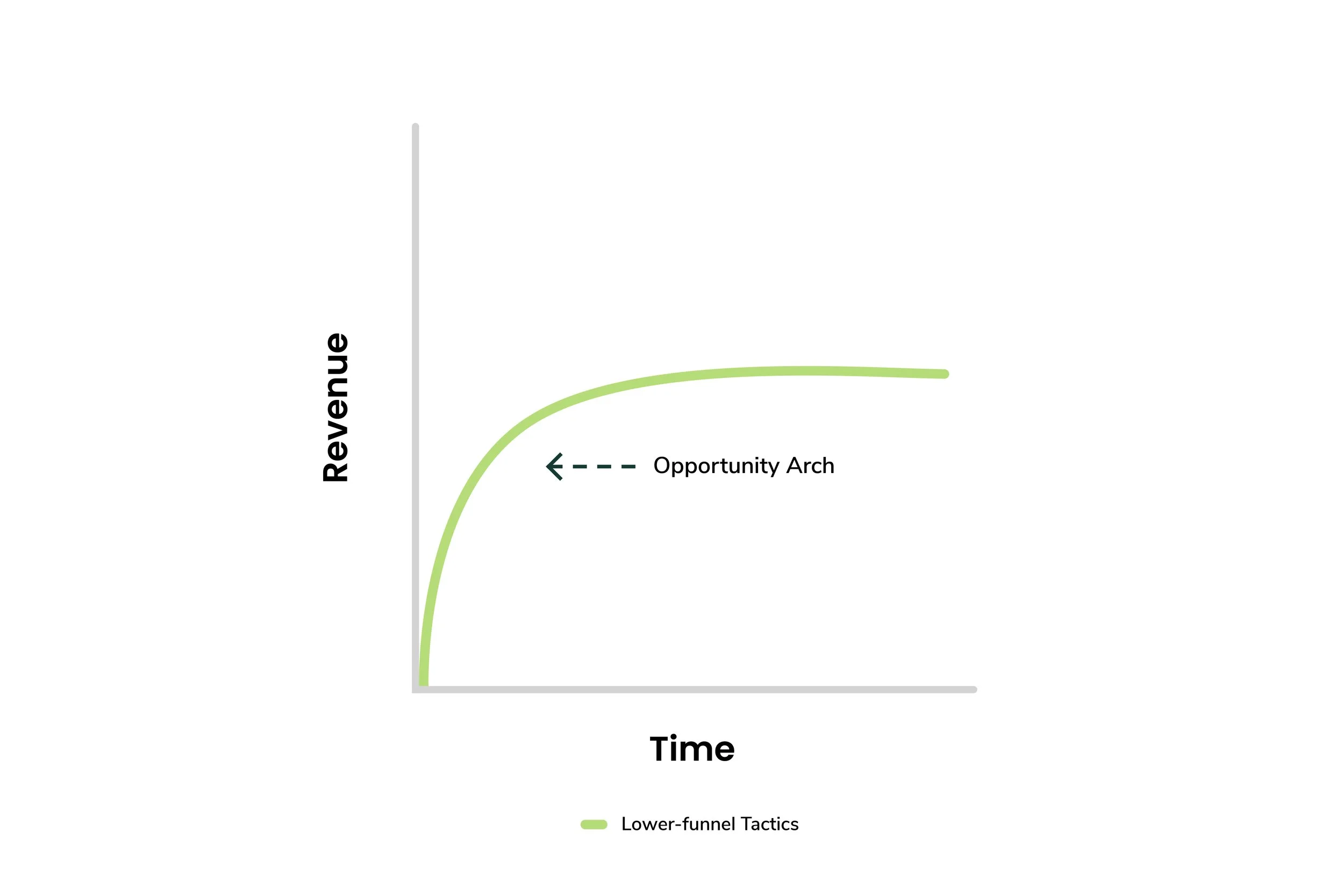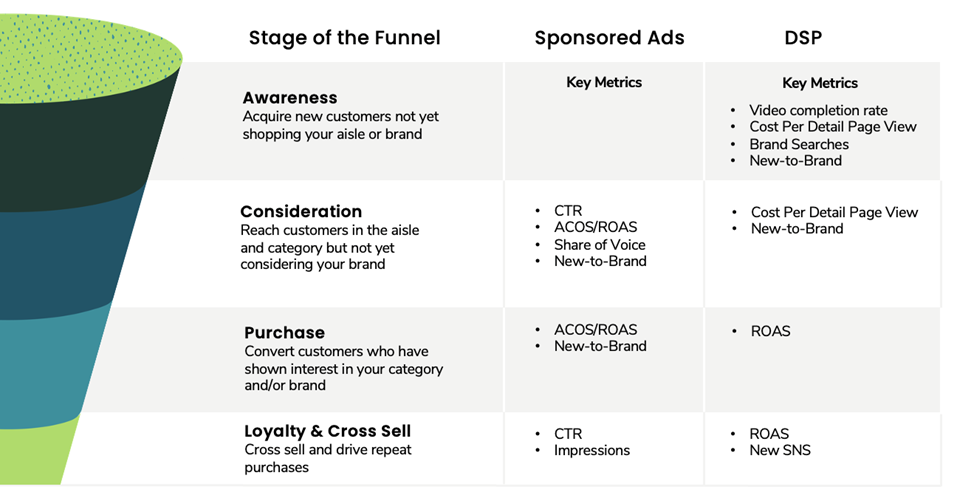Balancing Short-term Revenue and Long-term Profitability: Lessons from a Full-funnel Amazon Advertising Strategy
What you harvest is tempered by what you plant.
Success on Amazon requires a delicate balancing act between harvesting from the present opportunity and planting for the future.
When exploring ad strategies, it’s common for us to see brands focusing their Amazon advertising efforts on today’s harvest—the more immediate opportunity for short-term revenue. Sponsored Ads, including Sponsored Products, Sponsored Brands, Sponsored Brand Video, Sponsored Display, all play a critical role in capturing that more immediate opportunity because they influence consumers who are closest to the point of purchase.
But this more immediate opportunity has a ceiling.
Here’s what that could look like:
As you can see, Sponsored Ads can quickly scale to capture the most immediate revenue from a new lower-funnel opportunity, but eventually, that opportunity arch will hit a ceiling and your growth will flatten. The success is that you’ve taken advantage of that opportunity. The challenge is that the opportunity has limits.
In this case, your growth is dependent on a few things:
Amazon driving additional consumers to shop your category and reigniting the opportunity,
Competitors growing your category, but doing so in a way that prioritizes their products over yours, or
Your own efforts to drive awareness by conquesting competitors’ customers or bringing new consumers into the category.
Options 1 and 2 are great, but you lack control.
Driving upper-funnel awareness is an investment in your long-term profitability because it raises the opportunity ceiling for your lower-funnel tactics. They might not be driving as much revenue today but their ability to increase your brand awareness will influence revenue growth tomorrow.
Here’s a visual of how that could work:
The revenue growth on upper-funnel tactics looks different than lower-funnel. There is a more delayed opportunity arch and the direct revenue from those tactics most likely won’t see the same size of return. However, upper-funnel tactics are designed to drive holistic growth.
By increasing awareness, you’re able to lift the ceiling on your lower-funnel tactics and create stair-step growth as you’re cycling new consumers into your category and to your products.
CASE STUDY: 3 Lessons from a Full-Funnel Strategy that Balances Short-Term and Long-Term Goals
To do this well, your strategy needs to be carefully designed to strike a balance between your short and long-term goals. One case study that shows how we did this for a client (you can read the full case study here) has some valuable lessons about the strategic process behind our success.
Source: Global Overview Internal Data, Case Study Reference Link
Here are the bullet points:
The client had strong loyalty (80% of transactions from repeat purchases) and we believed expanding their strategy to focus on new client growth could produce even greater LTV.
Since the client was most familiar with Sponsored Ads, our team used those ad tools to refine the initial strategies for new customer acquisition. We learned what products naturally drove the most engagement lower in the funnel and leveraged those same products to increase engagement further up the funnel.
Then, we layered in DSP to scale the success of Sponsored Ads.
Once we refined that combination of ad tools, we expanded the strategy even further to include STV.
This strategy has some significant lessons for any brand looking to create a similar impact:
Your short-term goals and long-term goals should share one primary purpose.
In the case of this client, their primary purpose was new customer acquisition. Sponsored Ads had hit their ceiling for new customer acquisition, so we leveraged DSP and then STV to lift that ceiling and stairstep their growth. While DSP and STV are vastly different, with potentially competing KPIs, we were careful to align the long-term goals of these upper-funnel tactics underneath that singular primary purpose. This created a compounding impact and a strong holistic lift.
Short and long-term goals should have complementary KPIs.
To avoid creating competing KPIs, utilize a holistic view of how all your KPIs can complement each other and build momentum throughout the funnel.
Here’s an example of how you could align the KPIs from Sponsored Ads and DSP to complement each other instead of compete with each other:
3. Adapt with the opportunity.
Goals change over time and so should your strategy. Things like the seasonality of your product, shifting revenue targets, movements among your competitors, and new product launches can all affect your strategy’s ability to achieve your goals. When you design your strategy around both short-term and long-term goals, build in flexibility to adjust for each of these variables while maintaining both profit and scale over time.
Balancing Your Strategy’s Lower- and Upper-funnel Tactics with Short- and Long-term Goals
We all want to drive revenue in the here and now. Our ability to accomplish this efficiently is a key foundational principle of sustainability. But singularly focusing on tactics with short-term goals that only impact today won’t create long-term profitability. There’s always a ceiling to the opportunity and we’re bound to hit it. By expanding our strategy to include both short- and long-term goals, we’re able to have more control over that opportunity ceiling and positively impact our total growth potential. If you need help imagining that balance between both short- and long-term goals as well as utilizing the right lower- and upper-funnel tactics, we’re ready to explore the possibilities with you. Connect with our team through the link below and get the conversation started.




